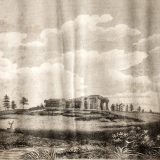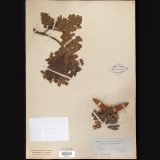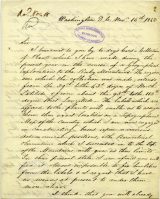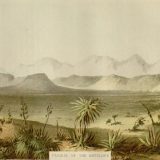Major Stephen Harriman Long expedition, 1819
While Torrey himself declined to serve in the unpaid role of botanist on this expedition to explore the upper Missouri River, he recommended Amos Eaton’s former student Dr. Edwin James (1787-1861) for the position. Torrey classified the specimens collected on this expedition, and described them in the Annals of the Lyceum of Natural History of New York.
Torrey’s descriptions included plants collected on James Peak (now known as Pikes Peak), and later continued to document the findings from 1824-28, naming plants including hoary fleabane (Erigeron canus), a relative of the daisy found in the western U.S.; trailing krameria (Krameria lanceolata) found in the Great Plains; and Rocky Mountain maple (Acer glabrum).
Image: S. Seymour, View of Ruins at the Base of the Rocky Mountains. In Account of an Expedition from Pittsburgh to the Rocky Mountains by Stephen Harriman Long (1784-1864). Philadelphia: H.C. Carey and I. Lea, 1822-1823. LuEsther T. Mertz Library, The New York Botanical Garden.




